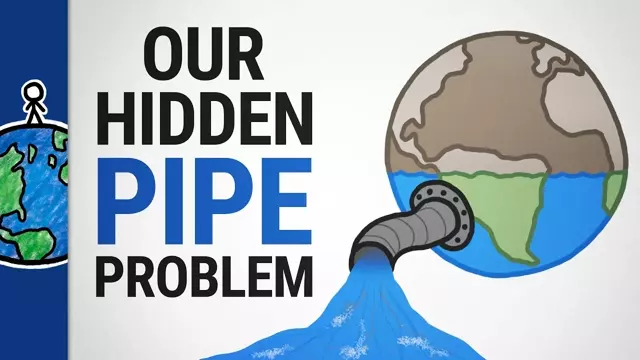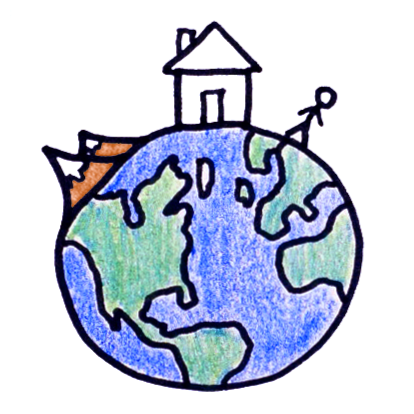2019-09-04
[public] 930K views, 23.0K likes, dislikes audio only
Thanks to the University of Minnesota for sponsoring this video! http://twin-cities.umn.edu/
Ditches and drain pipes help crops survive but can negatively impact the broader landscape.
Thanks also to our Patreon patrons https://www.patreon.com/MinuteEarth and our YouTube members.
__________________________________________
To learn more, start your googling with these keywords:
Waterlog - to saturate (a field) with water; a problem for most crops
Drainage - the removal of liquid (water) from an area
Ditch - a narrow channel dug in the ground, typically used for drainage alongside a road or the edge of a field
Drain tile - a pipe buried (beneath a field) for drainage. Originally made of ceramic tiles, now typically of corrugated plastic
Precision agriculture - putting corn seed + small dose of fertilizer/pesticides in hole in ground
Controlled drainage - the use of a water control structure to raise the depth of a drain tile outlet to hold water in the field when drainage isn't needed
Wood chip bioreactor - an underground trench filled with wood chips that provide carbon for bacteria that denitrify the water flowing through it
Saturated buffer - a strip on the edge of a field filled with plants & bacteria that can remove some nitrogen from the water flowing onto it from drain tiles
Denitrification - the removal of nitrogen from a substance (soil, air, or water) by chemical reduction, typically via bacteria
Wetland - an area of land where water covers the soil year-round or at certain times of year
Ecosystem services - the free benefits humans get from natural ecosystems
________________________________________
If you liked this week’s video, you might also like:
Why plant roots need oxygen: https://bit.ly/2kgD0Be
Restored wetlands don’t recover their original ecosystem functions: https://bit.ly/2VrccKK
A guide to agricultural drainage: https://bit.ly/2jX1ChZ
________________________________________
Subscribe to MinuteEarth on YouTube: http://goo.gl/EpIDGd
Support us on Patreon: https://goo.gl/ZVgLQZ
And visit our website: https://www.minuteearth.com/
Say hello on Facebook: http://goo.gl/FpAvo6
And Twitter: http://goo.gl/Y1aWVC
And download our videos on itunes: https://goo.gl/sfwS6n
________________________________________
Credits (and Twitter handles):
Script Writer, Script Editor and Video Narrator: Alex Reich (@alexhreich)
Video Illustrator and Director: Ever Salazar (@eversalazar)
With Contributions From: Henry Reich, Kate Yoshida, Peter Reich, David Goldenberg, Julián Gómez, Sarah Berman, Arcadi Garcia Rius
Music by: Nathaniel Schroeder: http://www.soundcloud.com/drschroeder
Image Credits: Aerial view of treatment wetlands - Photo by David Hansen
________________________________________
References:
Christianson, L.E. & Helmers, M.J., 2011. Woodchip Bioreactors for Nitrate in Agricultural Drainage. Agriculture and Environment Extension Publications. 85. https://bit.ly/2kdXPx7
Davidson, N. C. 2014. How much wetland has the world lost? Long-term and recent trends in global wetland area. Marine and Freshwater Research, 65(10), 934-941. https://bit.ly/2lwLUKW
Davidson, N. C., Fluet-Chouinard, E., & Finlayson, C. M. 2018. Global extent and distribution of wetlands: trends and issues. Marine and Freshwater Research, 69(4), 620-627. https://doi.org/10.1071/MF17019
Discovery Farms MN. November 2016. Controlling Nutrient Loss in Tile Systems. https://bit.ly/2lTi8QI
Dolph, C. Pers. comm. June 2019
Erb, K. H., et al. 2017. Land management: data availability and process understanding for global change studies. Global change biology, 23(2), 512-533. https://bit.ly/2kgs7zn
Feick, S., Siebert, S., & Döll, P. 2005. A digital global map of artificially drained agricultural areas. https://bit.ly/2ksM3if
Finlay, J. Pers. comm. June 2019
Foufoula‐Georgiou, E., et al. 2015. The change of nature and the nature of change in agricultural landscapes: Hydrologic regime shifts modulate ecological transitions. Water Resources Research, 51(8), 6649-6671. https://bit.ly/2lu6Su7
Hansen, A. T., Dolph, C. L., Foufoula-Georgiou, E., & Finlay, J. C. 2018. Contribution of wetlands to nitrate removal at the watershed scale. Nature Geoscience, 11(2), 127. https://bit.ly/2lQe9nY
IPBES. 2019. Summary for policymakers of the global assessment report on biodiversity and ecosystem services of the Intergovernmental Science-Policy Platform on Biodiversity and Ecosystem Services. S. Díaz, et al. (eds.). IPBES secretariat, Bonn, Germany. Pg 11-12. https://bit.ly/2WX4c4U
Millennium Ecosystem Assessment. 2005. Ecosystems and human well-being: Wetlands and Water Synthesis. World Resources Institute, Washington, DC. https://bit.ly/2QYNd0v
Mustroph, A. 2018. Improving flooding tolerance of crop plants. Agronomy, 8(9), 160. https://bit.ly/2k1jzfu
https://www.patreon.com/minuteearth
/youtube/video/dJi-fdFvNHQ?t=0
/youtube/video/dJi-fdFvNHQ?t=74
/youtube/video/dJi-fdFvNHQ?t=124
/youtube/channel/UCeiYXex_fwgYDonaTcSIk6w
https://patreon.com/minuteearth
/youtube/video/4DF94Wvtekk

